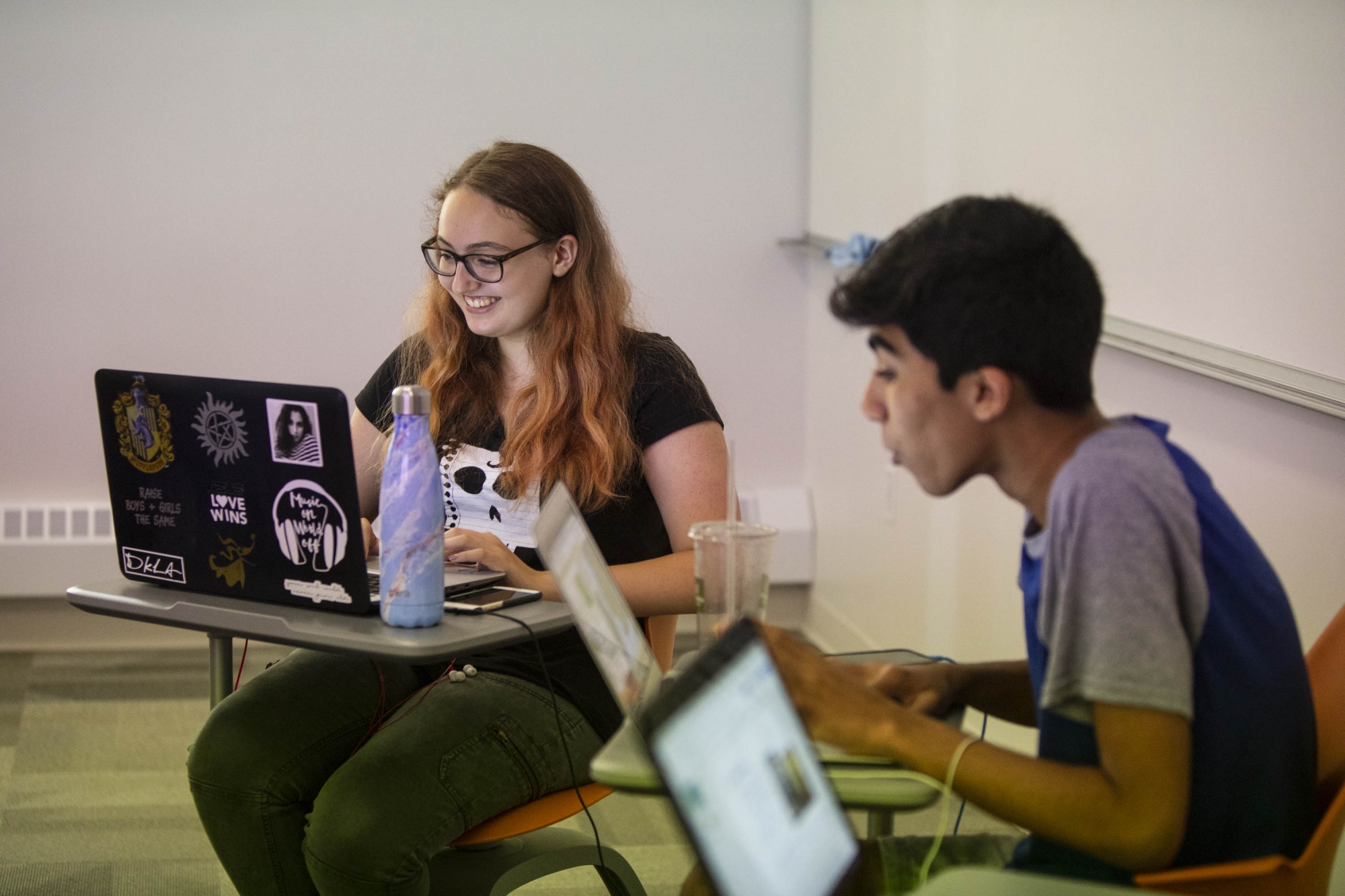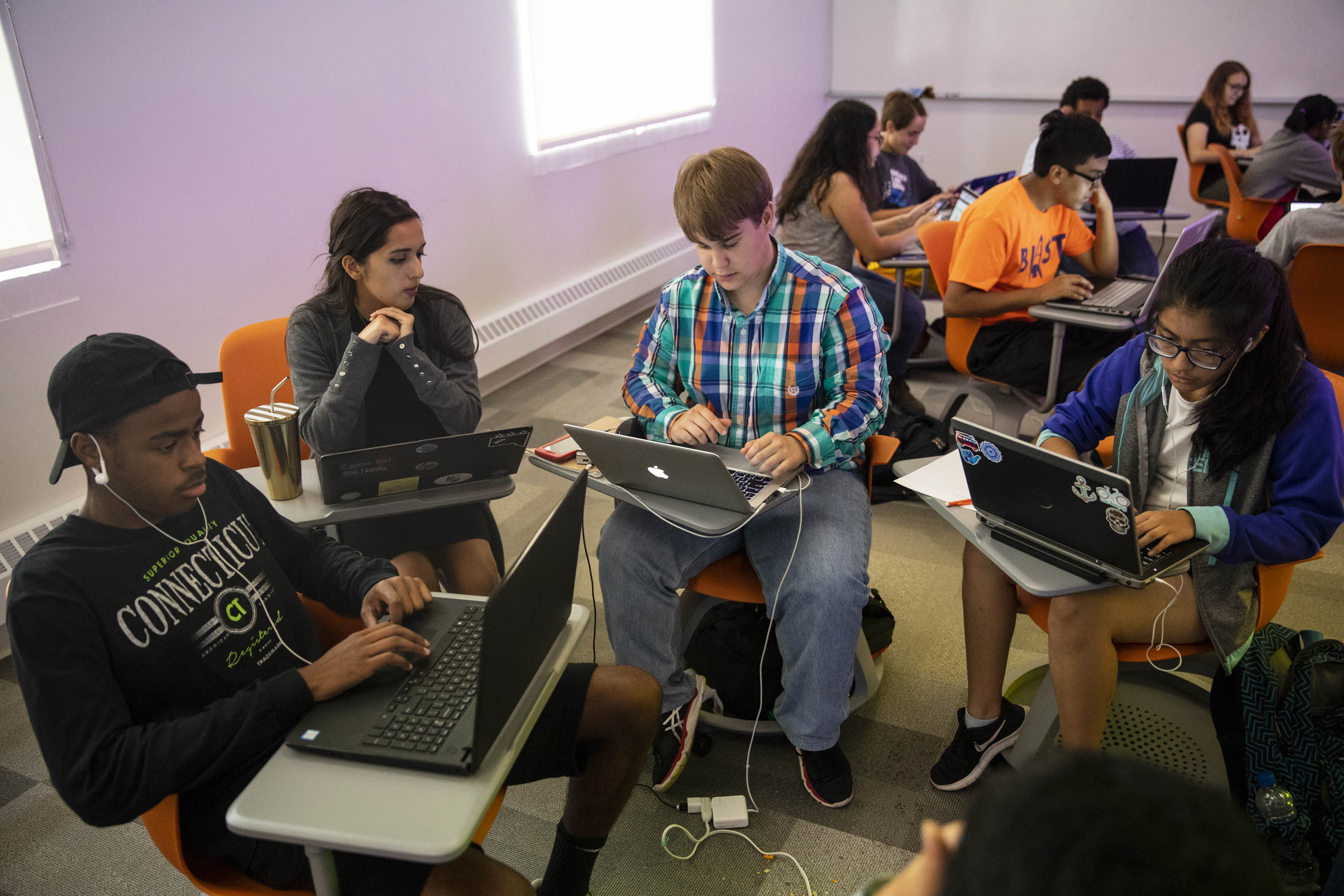By Kristen Mitchell
Sixteen-year-old Emma Mondry bent over her computer, deep in concentration as she poured over open-source data. After days of planning with her peers and digging up new information, a long-anticipated project on urban farming was starting to take shape.
“We have found some data, but it seems like a lot of data we want doesn’t exist,” she said.
Over two weeks Emma, a senior at the School without Walls, has learned that particular frustration is common in data science. She recently participated in a “STEAM” summer camp hosted by the George Washington University Data Science Program. The free camp focused on building students’ familiarity with open data related to science, technology, engineering, agriculture and math. The camp was co-sponsored by the U.S. Department of Agriculture.
Emma and her group worked together to analyze the links between urban agriculture and gentrification. They searched for open source data related to home prices in New York City and Washington, D.C., to see if there was a correlation between higher home values and increased farming. Emma said the camp was a good way to learn more about data visualization, which will help her prepare for future research in psychology, she said.
“The urban agriculture side of this appealed to me because I’m interested in food deserts and helping people,” she said. “I figured it would be good experience to gather research so this would help me in other ways I guess.”
Twenty-six students from the D.C. area developed projects centered around urban forestry, urban farming and food and nutrition. During the first week of the camp, students learned how to collect data and make sense of it with data visualization software from Tableau and mapping software from Esri. Both companies provided resources for the camp.

Emma Mondry (left) works on a group project about urban farms during a two-week data science camp hosted by GW. (Logan Werlinger/ GW Today)
Larry Medsker, founding director of the Columbian College of Arts and Sciences Data Science Program, said one of the goals of the camp was to show students how to systematically solve problems using data. Learning through experimentation is key, he said.
“There is a tendency among all of us to want to get data and start hacking away on it, but we want to have a structured approach where we define the problem we’re interested in that really helps us in solving that problem,” he said. “If we can get people to think about having a process like that it would be really good for them to have a right way to go about that.”
Another goal of the camp was to help build student confidence using analytical tools. Not all schools have a curriculum that focuses on data science, which can discourage students from signing up for degree programs when they get to college.
Jasmine Sami, M.S. ‘18, a research assistant with the camp, said she wants to help demystify data science.
“It can be an intimidating concept, using visualization tools and gathering your own data,” she said. “These concepts can seem very heavy and hard to understand if you don’t have exposure to it.”
Graduate students Krystin Sinclair and Zachary Stein also worked as research assistants, helping organize and oversee the camp. This is the first year the camp was operated at GW. It was previously held at New York University before a one-year hiatus. In addition to completing their own projects, students heard from USDA, Tableau and Esri data scientists about career opportunities in the field.
The USDA representatives consisted of Bobby Jones, the USDA chief data officer and director of enterprise architecture, Cynthia Larkins, IT specialist, and Dennis Crow, data professional for the Farm Service Administration. Mr. Jones said he was pleased with how the students engaged the agricultural topics and embraced the art of data collection, cleansing and analytics.
Nii Laryea, a 16-year-old at MOT Charter High School, plans to pursue computer science or engineering in college. During camp he analyzed the relationship between tree canopies and pollution in various cities. His favorite part of the camp was learning about the new software and how to make data more meaningful through visualization. This experience gave Nii a renewed sense of confidence as he heads into his junior year.
“In school we usually make graphs for our science and lab reports,” he said. “This is something I will be able to apply in future lab reports.”



